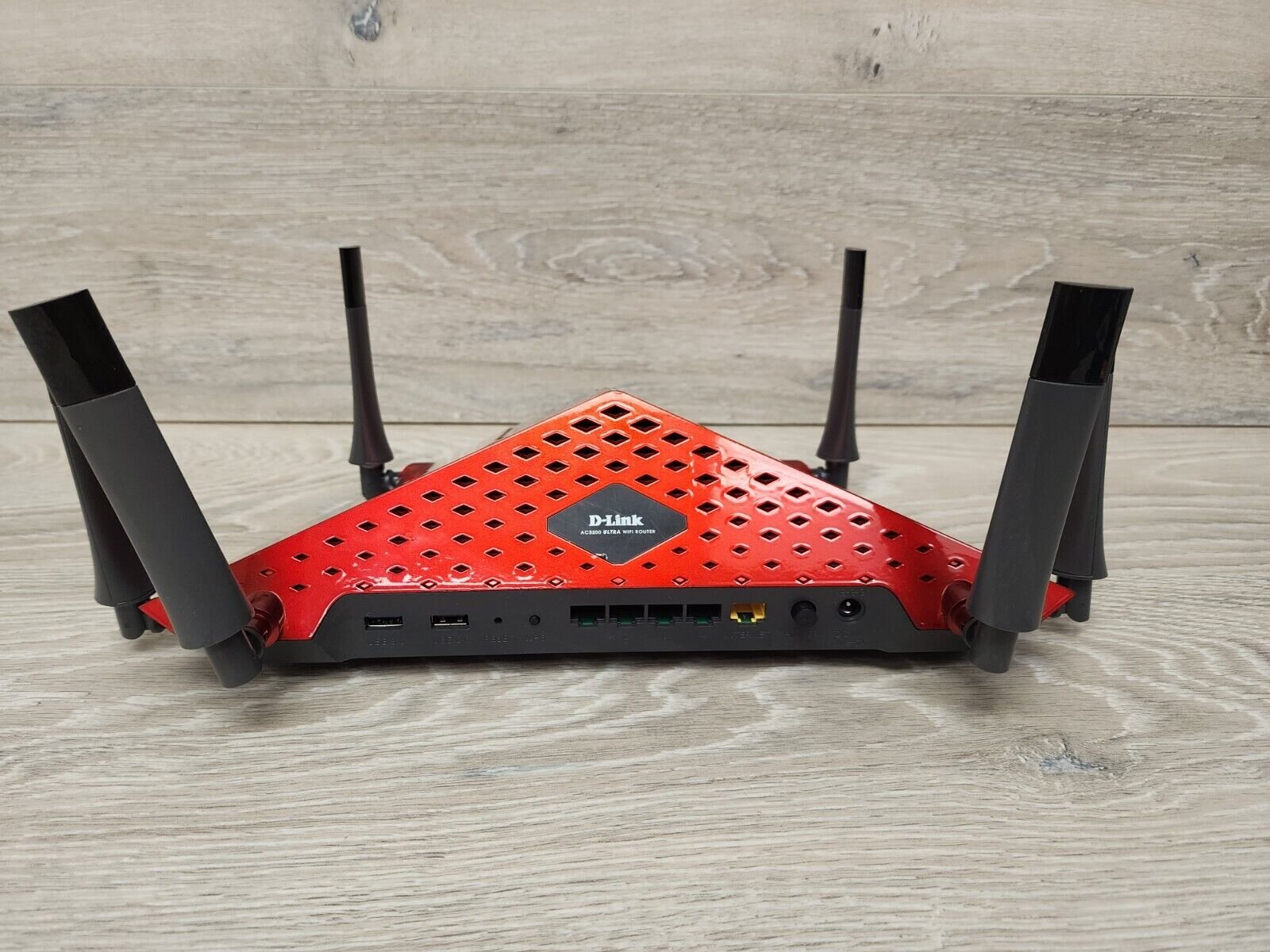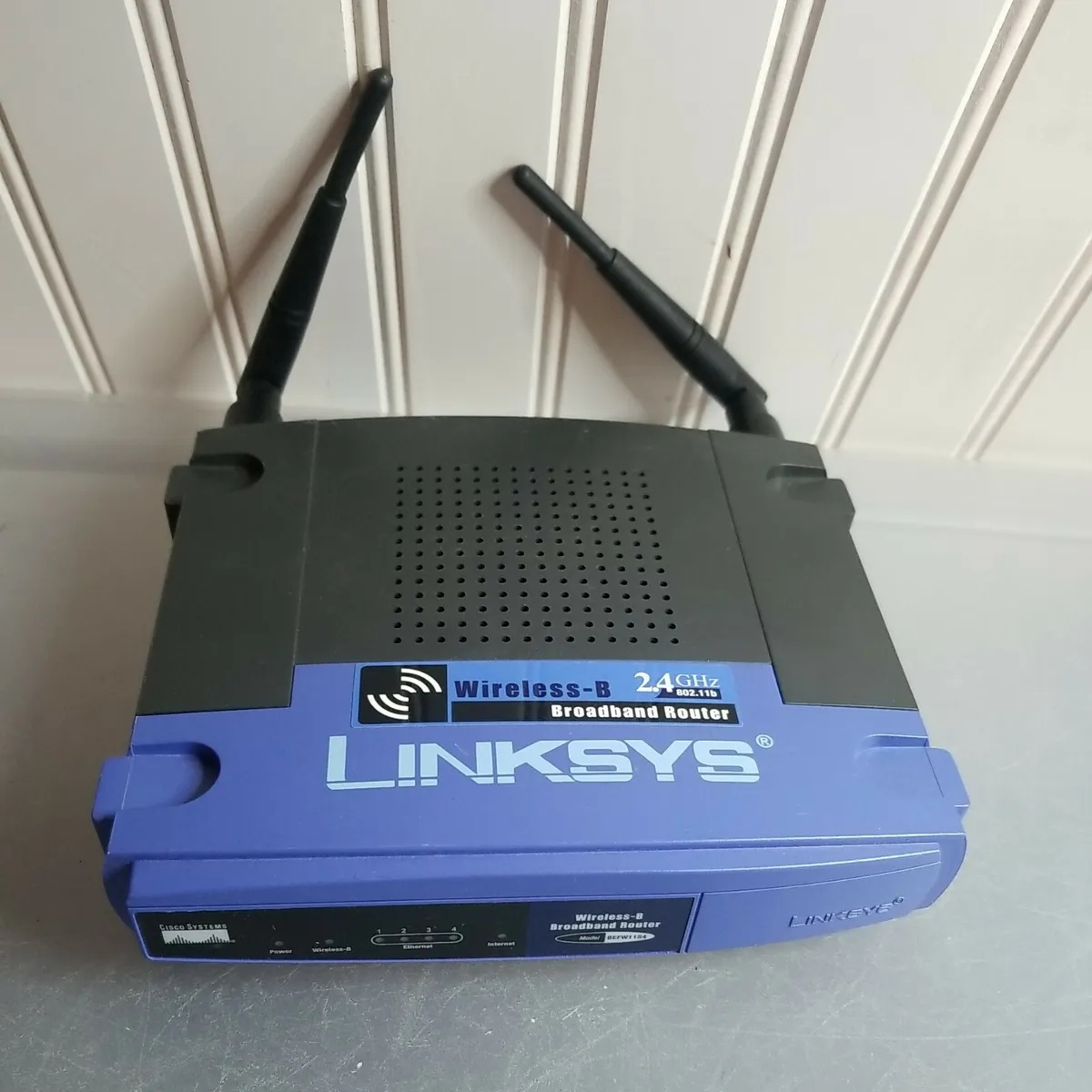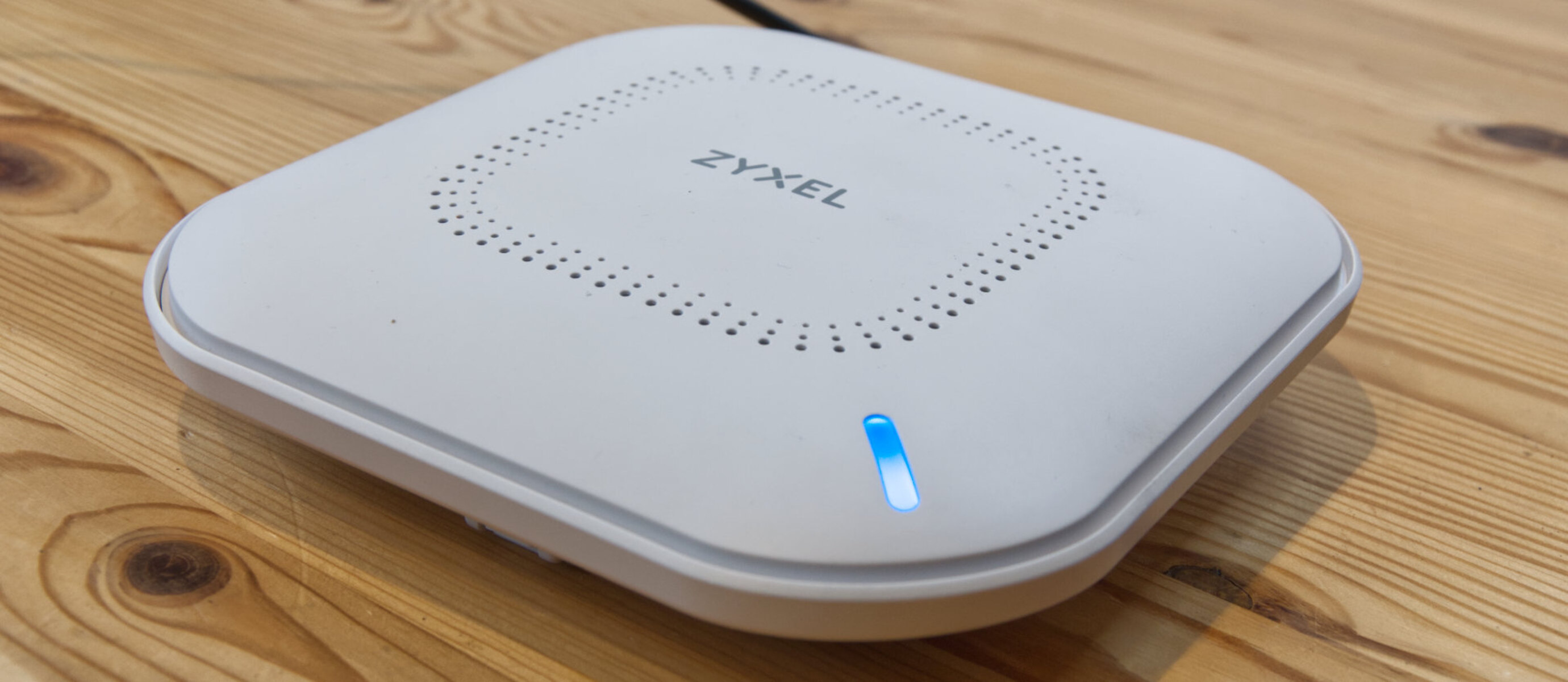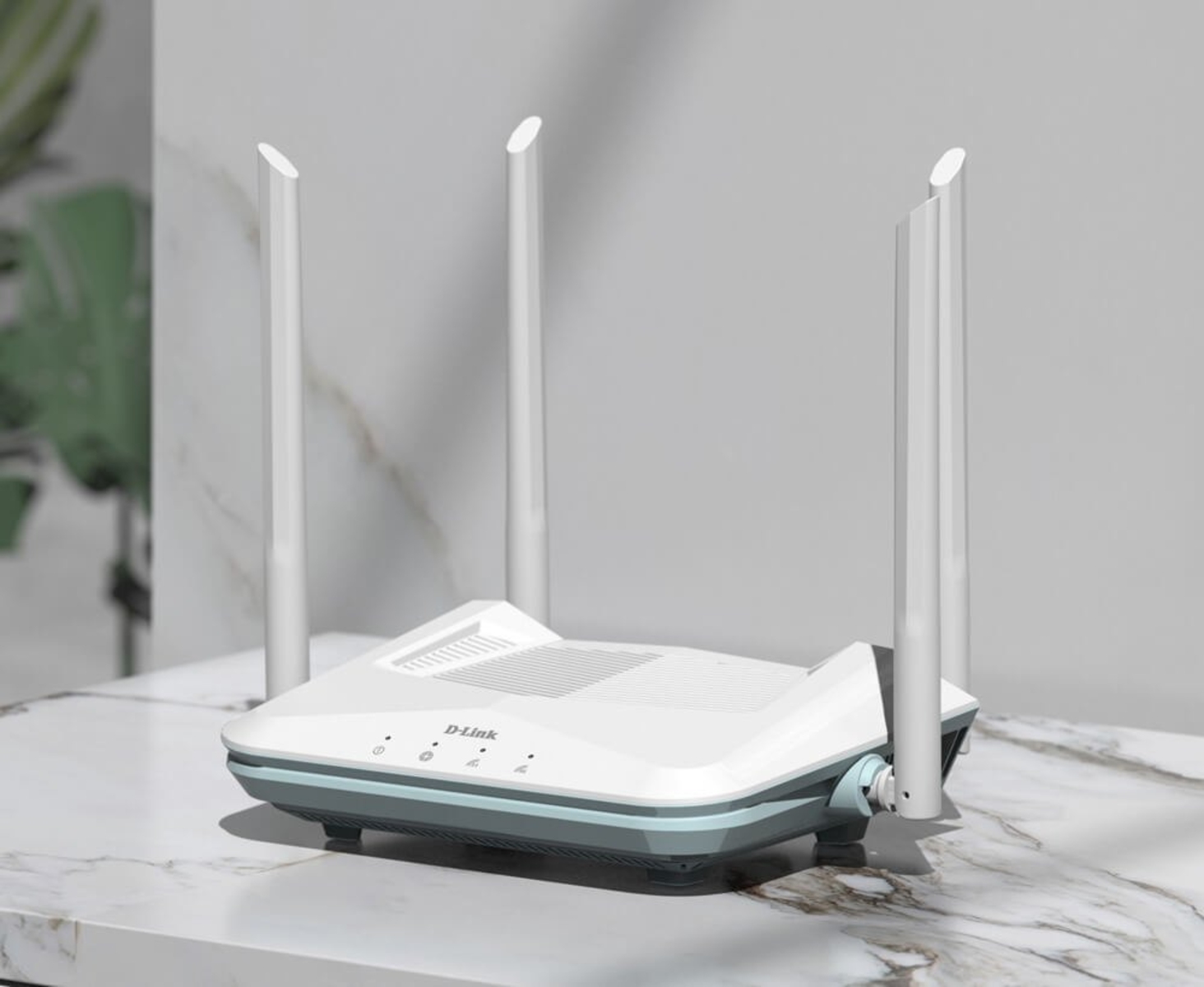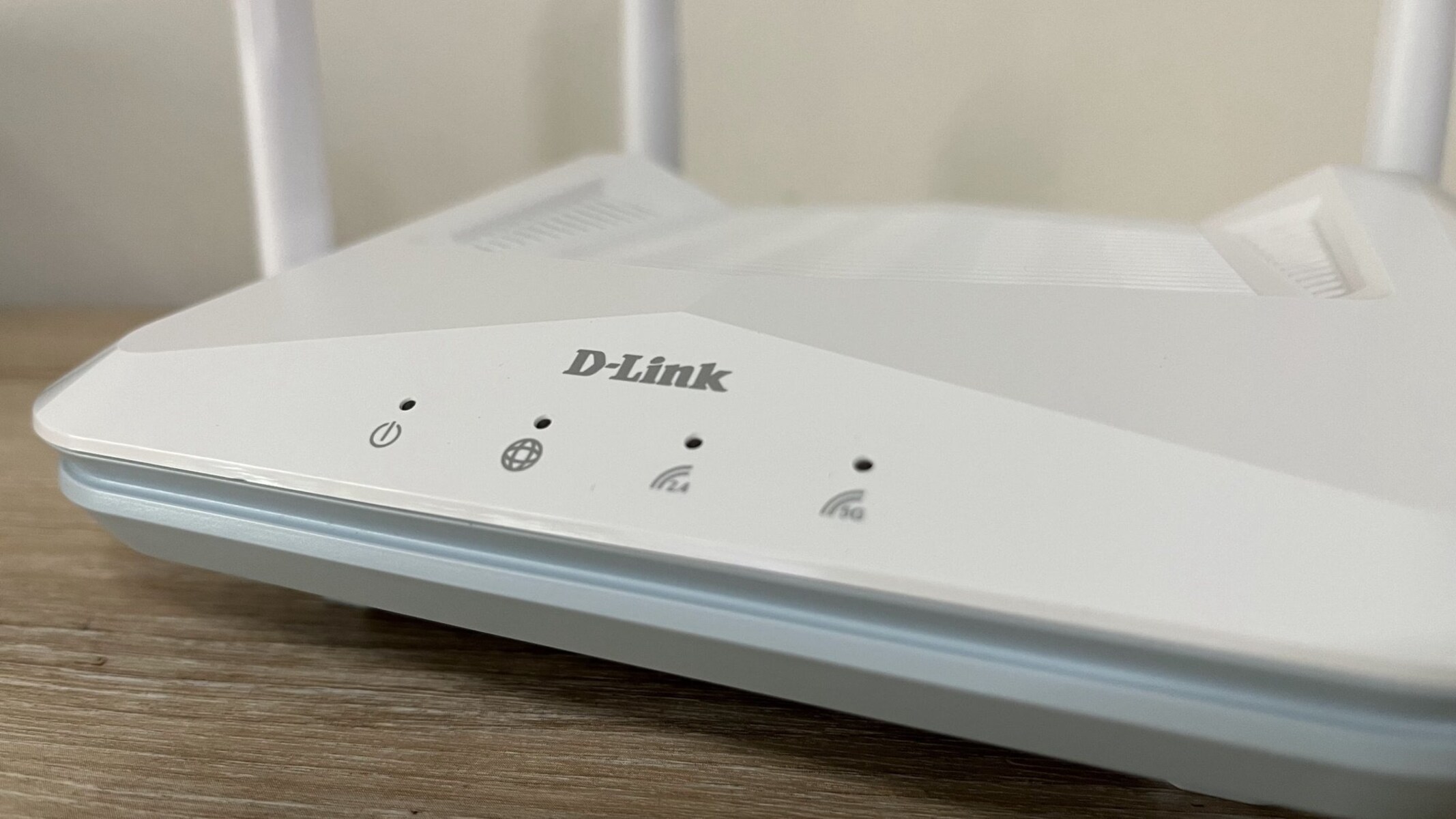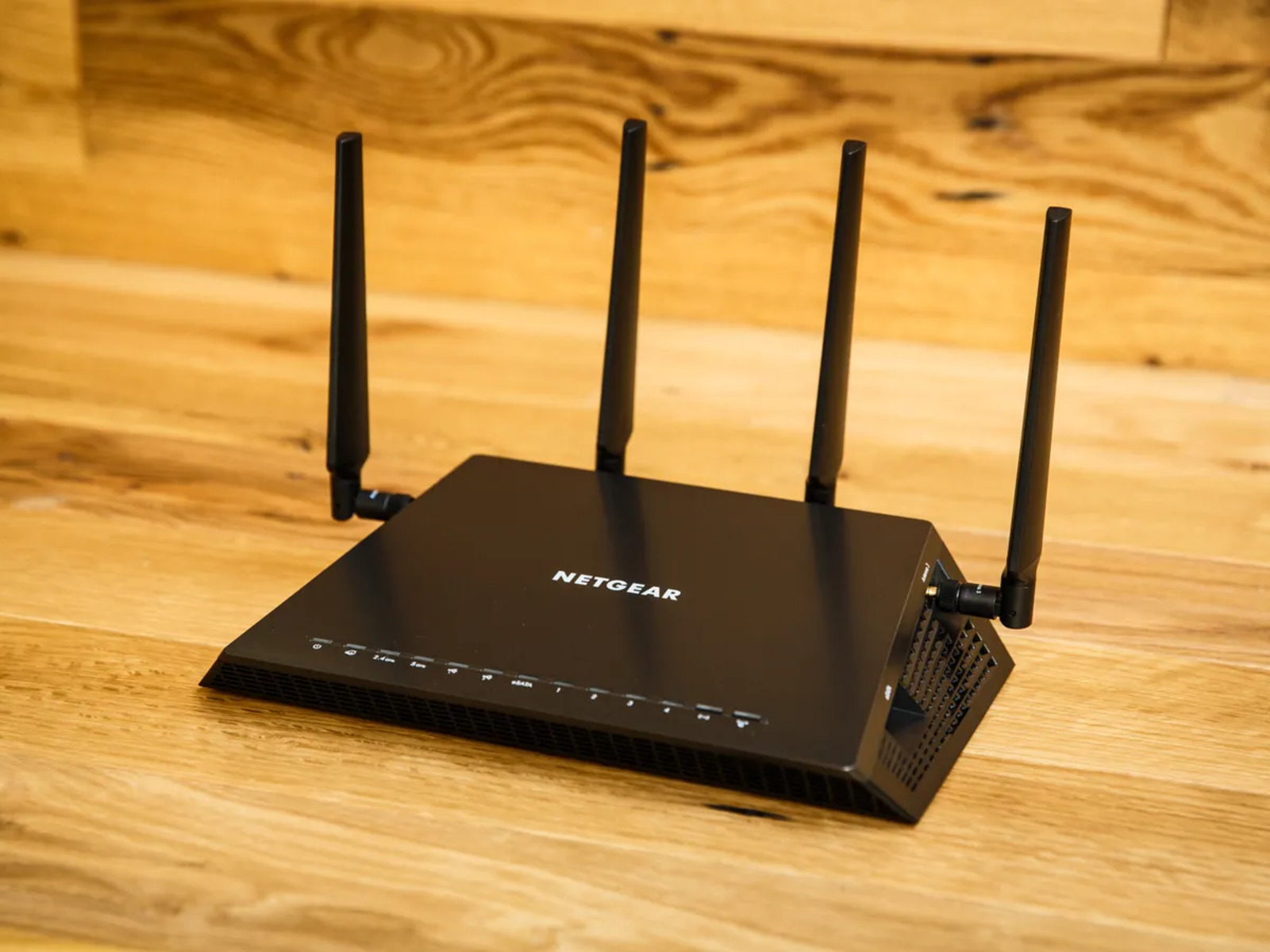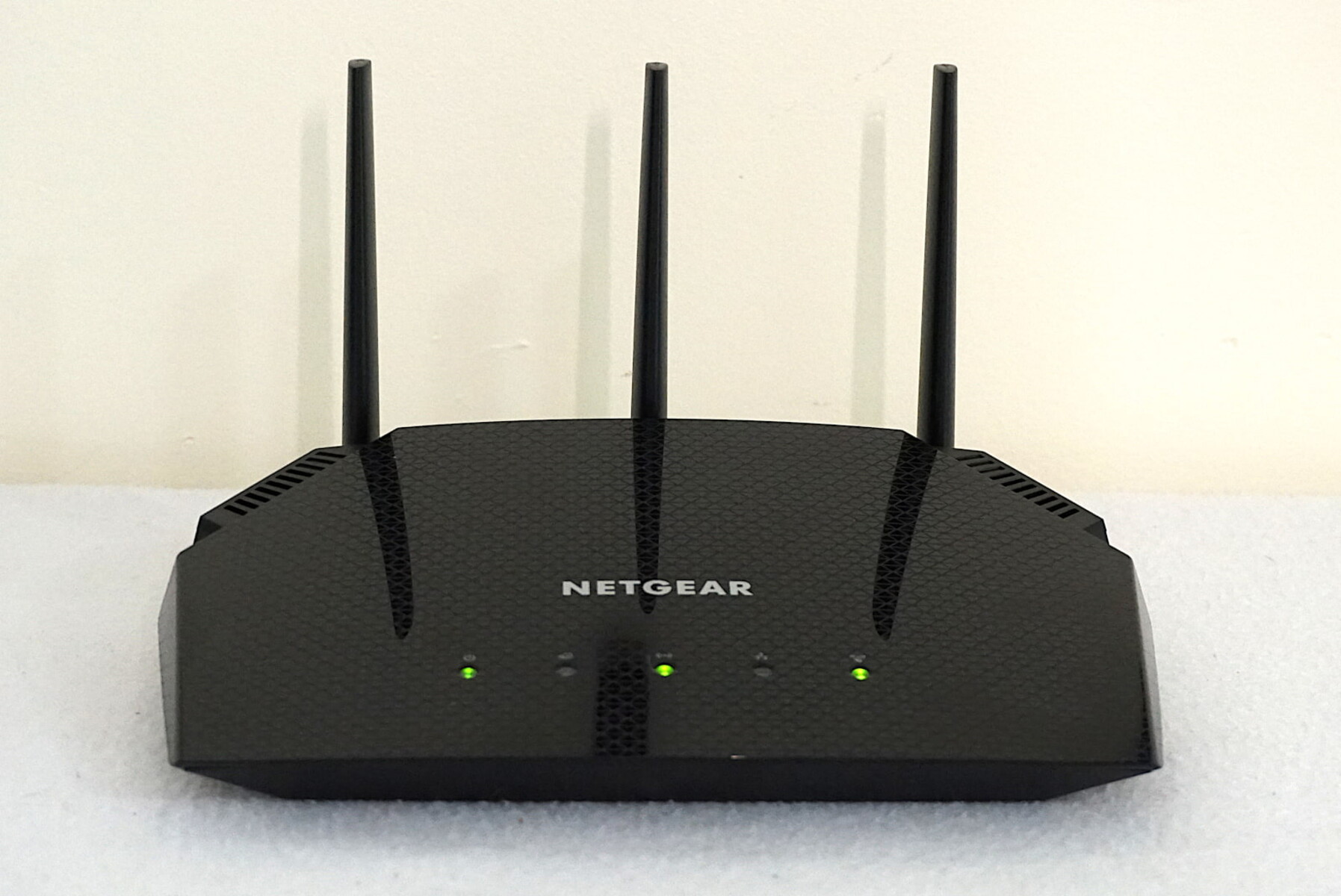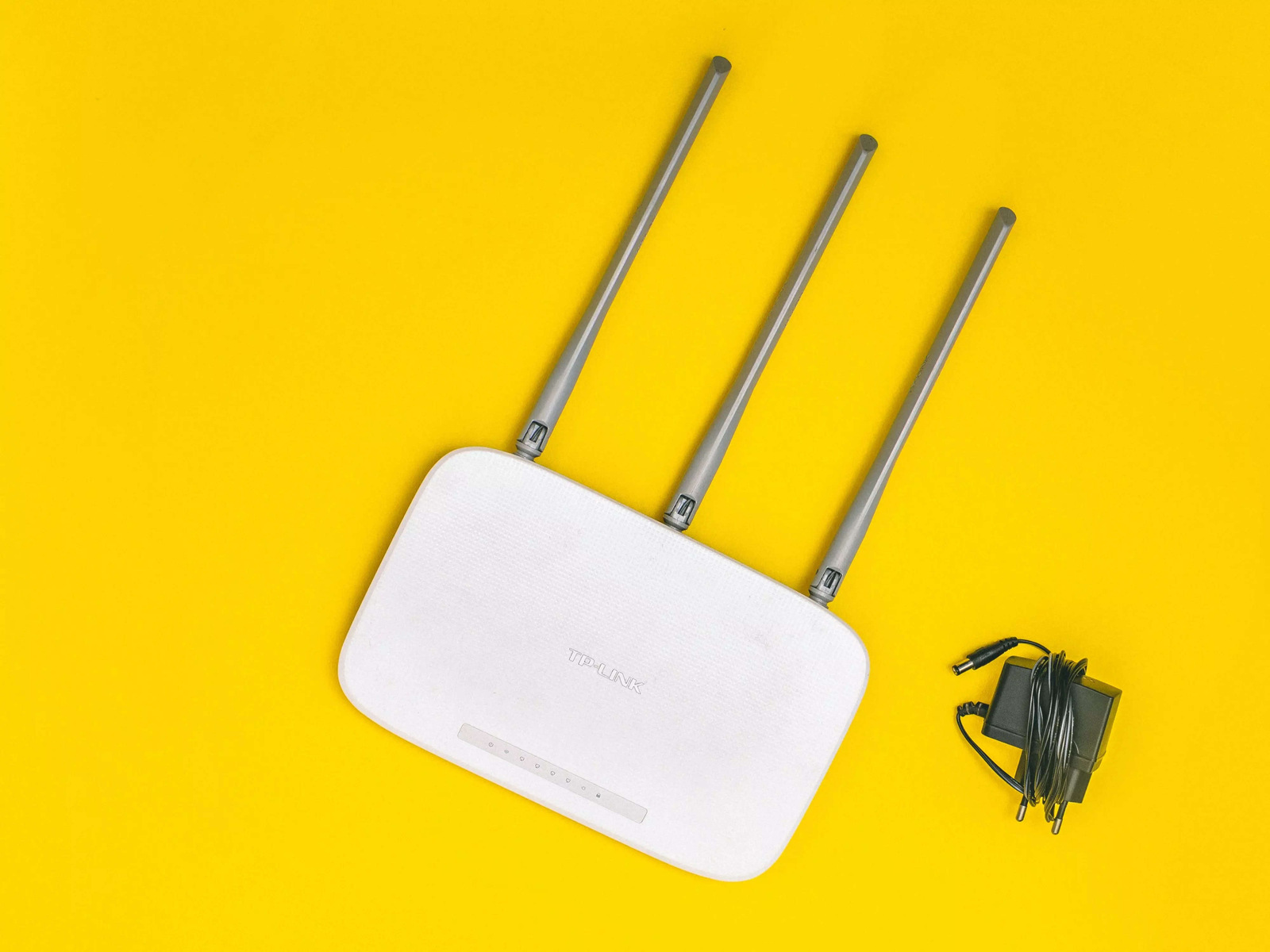Introduction
When configuring a wireless router, there are several important steps you should always take to ensure the security and efficiency of your network. Whether you’re setting up a new router or making changes to an existing one, following these essential guidelines can help you optimize your wireless connection and safeguard your data.
Wireless routers play a crucial role in our digital lives. They provide us with the ability to connect multiple devices to the internet simultaneously, whether it’s for work, entertainment, or staying in touch with loved ones. However, without proper configuration, your wireless network can be vulnerable to unauthorized access, data breaches, and performance issues.
In this article, we will explore the key steps you should always take when configuring a wireless router. By following these best practices, you can enhance your network’s security, improve its performance, and ensure a seamless browsing experience for all connected devices.
From updating the firmware to enabling encryption and changing default login credentials, each step is essential for a secure and efficient wireless network environment. We will delve into each of these steps in detail, providing you with actionable insights and recommendations to implement.
By the end of this article, you will have a comprehensive understanding of the necessary measures to take when configuring a wireless router. So, let’s dive in and learn how to optimize your network’s performance and security!
Update the firmware
One of the first steps you should always take when configuring a wireless router is to update its firmware. Firmware is the software that runs on the router, controlling its functionality and security features. Manufacturers regularly release firmware updates to address vulnerabilities, improve performance, and add new features.
Updating the firmware is crucial for two main reasons:
-
Security: Firmware updates often include patches for known security vulnerabilities. By keeping your router’s firmware up to date, you can ensure that any known security issues are resolved, reducing the risk of unauthorized access to your network and protecting your sensitive data.
-
Performance and Features: Firmware updates may also improve the performance and functionality of your router. These updates can enhance wireless signal strength, optimize network speed, and even add new features that enhance your overall user experience.
To update the firmware, you should visit the manufacturer’s website and locate the support or download section. Look for the firmware update specifically designed for your router’s model. Download the firmware file and follow the manufacturer’s instructions to install it on your router.
It is important to note that during the firmware update process, you should avoid turning off or unplugging your router. Disconnecting the power supply or interrupting the update can lead to a malfunctioning router or even permanent damage.
Furthermore, it’s a good practice to periodically check for firmware updates and install them as soon as they become available. Manufacturers often release updates regularly, so staying up to date will ensure that your router is equipped with the latest security patches and performance enhancements.
Updating the firmware of your wireless router should be considered a routine maintenance task. By keeping your router’s firmware up to date, you can improve your network’s security, performance, and feature offerings.
Change the default login credentials
One crucial step that you should always take when configuring a wireless router is to change the default login credentials. When routers are first set up, they come with default username and password combinations that are widely known and easily exploited by hackers. Changing these default credentials is essential for protecting your network from unauthorized access.
The default login credentials are often easy to guess, as they are typically set to generic usernames such as “admin” and passwords such as “password” or “1234”. Leaving these default settings in place makes it incredibly easy for attackers to gain access to your router’s settings and potentially compromise your network security.
To change the default login credentials, you will need to access the router’s administrative interface. This is typically done by typing the router’s IP address into a web browser, such as Chrome or Firefox. Once you have accessed the administrative interface, navigate to the settings section related to login credentials.
When choosing new login credentials, it is important to create strong, unique passwords that are difficult to guess. The password should contain a combination of letters, numbers, and special characters. Additionally, it is advisable to avoid using common words or personal information that could be easily associated with you.
Remember to keep a record of your new login credentials in a safe and secure location. Changing the default login credentials is a simple and effective way to strengthen the security of your wireless router and protect your network from unauthorized access.
It is worth noting that changing the default login credentials is not a one-time task. It is recommended to periodically change your passwords to further enhance security. Regularly updating your login credentials reduces the risk of unauthorized access and ensures the continued protection of your network.
By changing the default login credentials of your wireless router, you take a significant step towards strengthening your network security and protecting your sensitive information from potential attackers.
Enable encryption
Enabling encryption is a crucial step in securing your wireless network when configuring a wireless router. Encryption ensures that the data transmitted between devices and your router is scrambled and unreadable to unauthorized users. Without encryption, attackers can easily intercept and access sensitive information, such as passwords, credit card details, and personal data.
The most commonly used encryption protocols for wireless networks are Wi-Fi Protected Access (WPA) and Wi-Fi Protected Access 2 (WPA2). These protocols provide a secure connection by encrypting the data transmitted over your wireless network.
To enable encryption, access your router’s administrative interface and navigate to the wireless settings section. Look for the security or encryption settings, where you can select the appropriate encryption method, typically WPA2. If your devices do not support WPA2, you can choose WPA as an alternative.
When enabling encryption, you will be prompted to set a passphrase or pre-shared key (PSK). This passphrase is used to authenticate the devices that connect to your wireless network. It is crucial to choose a strong, unique passphrase that is not easily guessed. Avoid using common words or personal information as part of your passphrase.
Once encryption is enabled and a strong passphrase is set, all devices connecting to your wireless network will be required to enter the passphrase for authentication. This ensures that only authorized users with the correct passphrase can access your network.
It is important to note that older encryption protocols, such as Wired Equivalent Privacy (WEP), should be avoided as they are less secure and more susceptible to attacks. Upgrading to WPA2 or WPA provides a higher level of security for your network.
Enabling encryption on your wireless network is a critical step in protecting your data and maintaining the privacy of your communication. By encrypting your wireless network, you create a barrier that prevents unauthorized individuals from intercepting and accessing your sensitive information.
Change the SSID
Changing the Service Set Identifier (SSID) is an important step to consider when configuring a wireless router. The SSID is the name of your wireless network that is broadcasted to identify your network to devices. By default, routers often come with a generic, recognizable SSID provided by the manufacturer. It is essential to change the SSID to something unique to enhance the security and reduce the likelihood of potential unauthorized access.
When choosing a new SSID, it is recommended to avoid using personal information, such as your name or address. Instead, opt for a unique and creative name that does not reveal any identifiable information about you. This helps to prevent potential attackers from targeting your network specifically.
Changing the SSID not only improves security but also presents an opportunity to personalize your network. You can choose a creative name that reflects your personality or interests. Just ensure it does not contain any sensitive or personally identifiable information.
Access your router’s administrative interface and navigate to the wireless settings section to change the SSID. Look for the option related to the network name or SSID and enter your desired name. Once you save the changes, the new SSID will be broadcasted, and devices in range will detect and display it as an available network.
Remember to update the SSID on all your connected devices, including laptops, smartphones, and smart home devices, to ensure a seamless connection to your newly named network.
It is important to note that changing the SSID does not provide complete security on its own. It is just one layer of defense against potential attackers. Therefore, it is essential to follow other best practices, such as enabling encryption and changing default login credentials, to ensure a secure wireless network environment.
Changing the SSID of your wireless network allows you to customize your network’s identity while improving security. By choosing a unique SSID, you make it more difficult for attackers to identify and target your network, enhancing overall network protection.
Disable remote management
Disabling remote management is a crucial step in securing your wireless router when configuring it. Remote management allows you to access and control your router’s settings from a remote location, such as when you are away from home. While remote management can be convenient, leaving it enabled can pose a significant security risk.
When remote management is enabled, it opens up a potential entry point for attackers looking to gain unauthorized access to your router. Attackers can exploit vulnerabilities in the remote management feature to gain control of your router, potentially compromising your network security and privacy.
To disable remote management, access your router’s administrative interface and navigate to the settings section related to remote management. Look for the option to disable remote management or uncheck the box that allows remote access to your router’s settings. Save the changes to ensure that remote management is disabled.
It is important to note that disabling remote management does not hinder your ability to access your router’s settings when you are connected to your local network. You will still be able to make changes to your router’s configuration by accessing the administrative interface within your home network.
If you do require remote access to your router for management purposes, it is recommended to utilize Virtual Private Network (VPN) technology to establish a secure connection before accessing the administrative interface. VPN encrypts your connection, ensuring that your communication remains secure even when accessing your router remotely.
By disabling remote management, you are closing off a potential avenue for attackers to gain unauthorized access to your router. This helps enhance the security of your wireless network and reduces the risk of compromising your sensitive data and network resources.
It’s essential to take proactive measures to protect your wireless router and network by disabling remote management. By doing so, you strengthen your network’s security and have greater control over who can access and modify your router’s settings.
Set a strong password for Wi-Fi access
Setting a strong password for Wi-Fi access is a critical step in securing your wireless network when configuring a wireless router. A weak or easily guessable password can make your network vulnerable to unauthorized access, potentially leading to data breaches, privacy violations, and even illegal activities being conducted on your network.
When choosing a password, there are several key factors to consider:
-
Password Length: A strong password should be at least eight characters long. However, longer passwords are generally more secure. Aim for a password that is at least 12 characters in length to provide an extra layer of security.
-
Character Variety: Your password should include a combination of uppercase and lowercase letters, numbers, and special characters. This creates a more complex and difficult password to crack.
-
Avoid Common Passwords: Avoid using easily guessable or commonly used passwords, such as “password” or “123456”. These are among the first passwords that hackers will attempt.
-
Unique Password: Ensure that your Wi-Fi password is unique and not used for any other accounts or services. Reusing passwords across multiple platforms increases the risk of compromise if one account is breached.
Access your router’s administrative interface and navigate to the wireless settings section to set a strong password for Wi-Fi access. Look for the option to change the Wi-Fi password or security key. Enter a strong password that adheres to the guidelines mentioned above and save the changes.
Remember to update the Wi-Fi password on all connected devices to ensure a seamless connection to your network with the new password. This includes laptops, smartphones, tablets, gaming consoles, and other smart devices.
Regularly changing your Wi-Fi password is also a good security practice. Set a reminder to update your password every few months or whenever you suspect a security breach may have occurred.
By setting a strong password for Wi-Fi access, you significantly reduce the risk of unauthorized access to your wireless network. A strong password is an essential component of a layered security strategy, alongside encryption, changing default login credentials, and other best practices.
Protect your network and personal information by setting a strong Wi-Fi password, making it much more challenging for potential attackers to breach your network security.
Enable MAC address filtering
Enabling MAC address filtering is an additional security measure you can take when configuring a wireless router. MAC address filtering allows you to control which devices can connect to your network based on their unique MAC addresses. This adds an extra layer of security by only allowing authorized devices to access your wireless network.
Every device that connects to a network has a unique MAC address assigned to its network interface card (NIC). MAC address filtering works by creating a whitelist of approved MAC addresses and denying access to any device not on the list.
To enable MAC address filtering, access your router’s administrative interface and navigate to the wireless settings section. Look for the MAC address filtering or access control section. Here, you can add the MAC addresses of the devices you want to allow or deny access to your network.
You have two options when configuring MAC address filtering:
-
Allow List: Also known as a whitelist, this option allows you to specify the MAC addresses of devices that are granted access to your network. Only devices with MAC addresses on the allow list will be able to connect.
-
Deny List: Also known as a blacklist, this option allows you to specify the MAC addresses of devices that are denied access to your network. Devices with MAC addresses on the deny list will be prevented from connecting.
It is important to note that MAC address filtering should not be solely relied upon as a complete security measure. MAC addresses can be spoofed or easily obtained, so it is not foolproof. However, when used alongside other security measures, such as encryption and strong passwords, MAC address filtering adds an extra obstacle for potential attackers.
When using MAC address filtering, it is crucial to keep the list of allowed or denied MAC addresses up to date. Regularly review and update the list as devices are added or removed from your network.
By enabling MAC address filtering, you gain more control over who can connect to your wireless network. It helps prevent unauthorized devices from accessing your network and adds an extra layer of security to your overall network protection.
Disable WPS
Disabling Wi-Fi Protected Setup (WPS) is an important step in securing your wireless network when configuring a wireless router. WPS is a feature that allows users to easily connect devices to a Wi-Fi network without entering a password. While it may be convenient, WPS introduces significant security risks that can be exploited by attackers.
WPS uses a PIN or a push-button method to establish a connection between a device and a router. However, the PIN method is particularly vulnerable to brute-force attacks, where attackers attempt to guess the PIN through automated software. Once the PIN is compromised, unauthorized access to your network becomes possible.
To disable WPS, access your router’s administrative interface and navigate to the WPS settings section. Look for the option to disable or turn off WPS. Save the changes to ensure that WPS is fully disabled.
It is important to note that some routers may have multiple WPS options, such as WPS PIN and WPS push-button. Disable both options to ensure complete deactivation of WPS.
By disabling WPS, you eliminate a potential vulnerability that can be exploited by attackers to gain unauthorized access to your network. It is worth noting that most modern devices support standard Wi-Fi connection procedures without relying on WPS.
Additionally, if you have previously set up your router using WPS, it is recommended to reconfigure your network using the more secure method of entering a strong password manually. This provides a higher level of security for your network.
Disabling WPS is a proactive measure to protect your wireless network from potential security breaches. By removing this vulnerable feature from your router’s settings, you enhance the overall security of your network and safeguard your personal information from unauthorized access.
Enable firewall protection
Enabling firewall protection is a critical step in securing your wireless network when configuring a wireless router. A firewall acts as a barrier between your network and the external world, monitoring incoming and outgoing network traffic and preventing unauthorized access to your network.
A firewall protects your network by examining data packets and filtering them based on predefined security rules. It serves as a gatekeeper, allowing only legitimate and safe traffic to pass through while blocking potentially malicious or unauthorized connections.
Most routers come with a built-in firewall that can be enabled through the router’s administrative interface. Access your router’s settings and navigate to the firewall or security section to enable firewall protection.
It is recommended to enable both inbound and outbound filtering for maximum network security. Inbound filtering scrutinizes incoming traffic from the internet, whereas outbound filtering examines outgoing traffic from devices on your network. This comprehensive approach helps prevent unauthorized access and protects against potential threats originating from within your network.
While most routers have a default firewall configuration, it is important to review and customize the firewall rules based on your network’s specific needs. Some routers allow you to create custom rules to further enhance security and tailor firewall protection to your requirements.
Regularly updating your router’s firmware is also crucial for ensuring the effectiveness of the firewall. Manufacturers frequently release firmware updates that include security patches and enhancements to keep up with the evolving threats landscape.
Enabling firewall protection on your wireless router adds an essential layer of defense against potential intrusions and cyberattacks. It safeguards your network, devices, and sensitive information from unauthorized access and malicious activities.
Remember that a firewall is just one component of a comprehensive security strategy. It should be used in conjunction with other security measures, such as strong passwords, encryption, and regular router maintenance, to ensure the overall safety and protection of your wireless network.
Secure the admin interface
Securing the admin interface of your wireless router is a vital step when configuring it. The admin interface is the control panel that allows you to manage and configure your router’s settings. Failing to secure this interface can leave your network vulnerable to unauthorized access and compromise your network security.
Here are some essential measures you should consider to secure the admin interface:
-
Change the default login credentials: As mentioned earlier, changing the default username and password provided by the manufacturer is crucial. Choose a strong, unique password and username to prevent unauthorized access to your router’s settings.
-
Use HTTPS instead of HTTP: By default, the admin interface may use the unencrypted HTTP protocol. Switching to HTTPS ensures that all communication between your device and the router is encrypted, protecting your login credentials and preventing eavesdropping.
-
Enable two-factor authentication (2FA): If your router supports it, enabling 2FA adds an extra layer of security. It requires a second form of verification, such as a code sent to your mobile device or a fingerprint scan, in addition to your username and password.
-
Limit access to the admin interface: Some routers allow you to restrict access to the admin interface to specific IP addresses or devices. By specifying the allowed IP addresses or MAC addresses, you limit who can access and modify router settings.
-
Regularly update firmware: Manufacturers often release firmware updates that patch security vulnerabilities. Keeping your router’s firmware up to date helps protect against known threats and ensures you have the latest security features.
Implementing these measures helps safeguard the admin interface and mitigates the risk of unauthorized access to your router’s settings. It is important to note that securing the admin interface is an ongoing process, and you should stay vigilant to emerging security threats.
By prioritizing the security of your router’s admin interface, you add another layer of protection against potential attackers. Properly securing this interface helps maintain the integrity of your network and ensures the privacy and security of your data and devices.
Enable guest network (optional)
Enabling a guest network is an optional but beneficial step when configuring a wireless router, especially if you frequently have visitors who need internet access. A guest network provides a separate network for guests to connect to, offering them internet access without compromising the security of your main network.
Here are some key advantages of enabling a guest network:
-
Enhanced security: A guest network creates a logical and physical separation between your primary network and the guest network. This means that devices connected to the guest network cannot communicate with devices on your main network, providing an additional layer of security for your sensitive data and devices.
-
Privacy: By offering a separate network, you protect your privacy by preventing unauthorized access to shared files, printers, or other devices connected to your main network. Guests are isolated from your private network and can only access the internet.
-
Bandwidth management: With a guest network, you can allocate a specific portion of your available bandwidth for guests. This ensures that your guests have a reliable and uninterrupted internet connection without impacting the performance of your primary network.
-
Convenience: By providing a separate network for guests, you eliminate the need to share your main Wi-Fi password, which can be tedious and potentially compromise the security of your primary network. Instead, you can provide a separate guest Wi-Fi network name and password specifically for visitors.
To enable a guest network, access your router’s administrative interface and navigate to the wireless settings section. Look for the option to enable the guest network feature. Configure the settings, including the network name (SSID) and password, and save the changes.
It is important to note that the exact steps for enabling a guest network may vary depending on your router model and manufacturer. Consult the router’s manual or manufacturer’s website for specific instructions.
While enabling a guest network is optional, it is a recommended practice for maintaining better control over your network security and ensuring a positive guest experience. By providing a separate network, you address the needs of your guests while protecting your primary network and sensitive information.
Enable parental controls (optional)
Enabling parental controls on your wireless router is an optional but valuable step when configuring it, especially if you have children or want to manage and restrict internet access for certain devices on your network. Parental controls allow you to regulate and monitor internet usage, ensuring a safe and age-appropriate online experience for your family members.
Here are some key benefits of enabling parental controls:
-
Content filtering: Parental controls enable you to block access to inappropriate websites or content that may be harmful or unsuitable for children. You can set filters based on content categories, age ratings, or specific websites to prevent access to explicit or inappropriate material.
-
Scheduling and time limits: With parental controls, you have the flexibility to set time limits for internet usage, schedule specific hours when internet access is allowed, and even restrict internet access during bedtime or homework hours. This encourages healthy screen time habits and helps create a balanced lifestyle.
-
Device-specific controls: Parental control features usually allow you to apply restrictions on a per-device basis. This allows you to customize the access privileges and restrictions for each device connected to your network, depending on the age and maturity of the user.
-
Monitoring and reporting: Many parental control systems offer monitoring and reporting features, allowing you to track internet usage, view browsing history, and receive reports on the websites visited or attempted to be accessed. This helps you stay informed about your family members’ online activities.
To enable parental controls, access your router’s administrative interface and navigate to the settings section specific to parental controls. Enable the feature and configure the desired restrictions, filtering options, time limits, and device-specific settings according to your requirements.
It is worth noting that the availability and functionality of parental control features can vary depending on your router model and manufacturer. Refer to your router’s manual or consult the manufacturer’s website for detailed instructions on enabling and configuring parental controls.
Enabling parental controls provides you with peace of mind, knowing that you can guide and protect your family’s online activities. It promotes a safer and healthier internet experience for children and ensures that they are not exposed to harmful or inappropriate content.
Conclusion
Configuring a wireless router is a crucial process to ensure the security and efficiency of your network. By following the essential steps outlined in this article, you can optimize your wireless connection and safeguard your data from potential threats.
We discussed key steps such as updating the firmware, changing the default login credentials, enabling encryption, changing the SSID, disabling remote management, setting a strong password for Wi-Fi access, enabling MAC address filtering, disabling WPS, enabling firewall protection, securing the admin interface, and optionally enabling a guest network and parental controls.
These steps collectively create layers of security, protecting your network from unauthorized access and securing your personal and sensitive information.
It is important to consistently stay vigilant about the security of your wireless network. Regularly check for firmware updates from the manufacturer and install them promptly. Additionally, periodically review and update your security settings, passwords, and access permissions to ensure continuous protection.
Remember that a strong security strategy involves a combination of measures, including encryption, strong passwords, firewall protection, and regular maintenance, to keep your wireless network secure.
By following these best practices, you can create a safe and reliable wireless network environment that provides optimal performance and protects your privacy. Enjoy a seamless browsing experience and peace of mind knowing that your network is well-secured.







